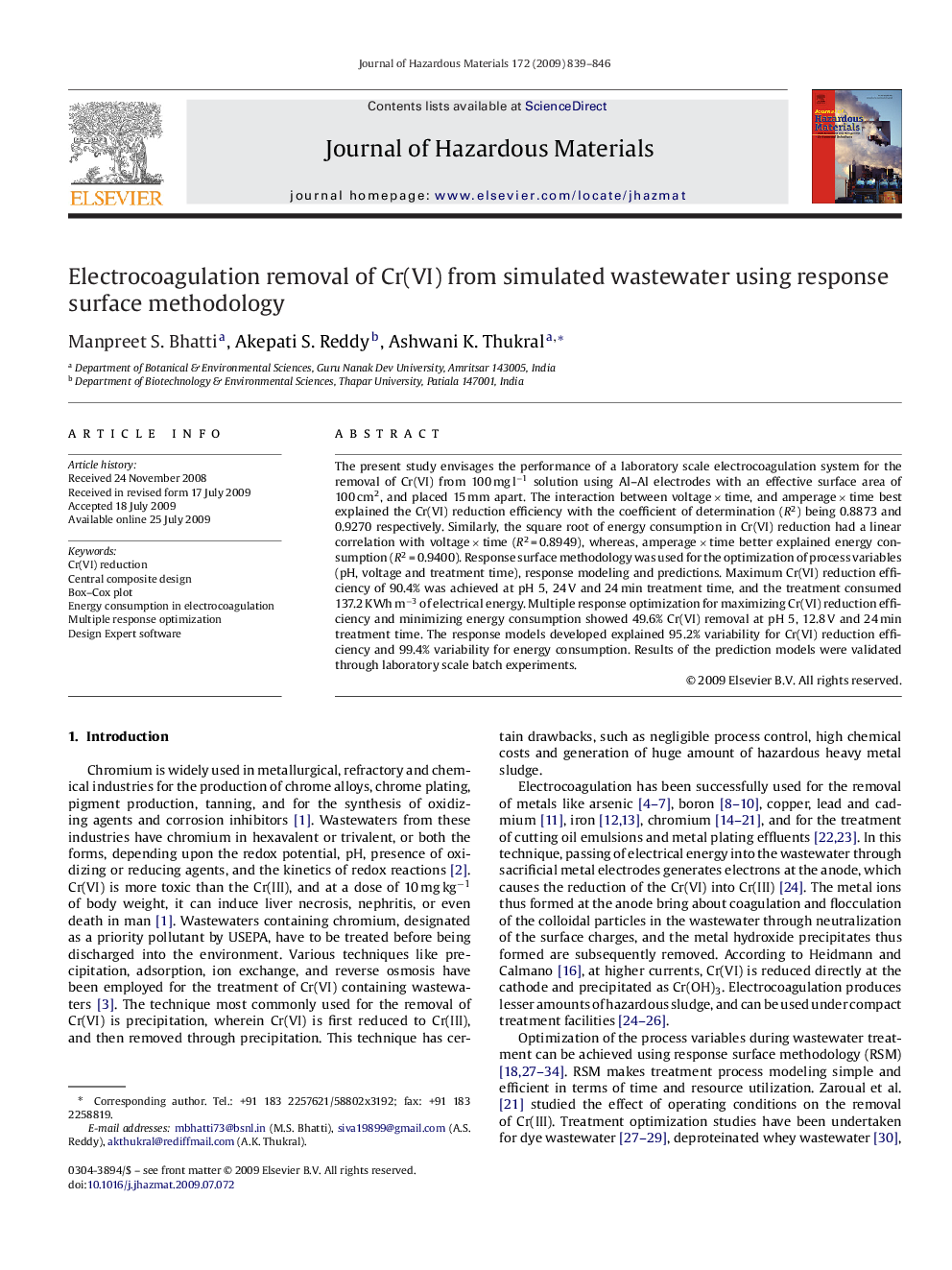| Article ID | Journal | Published Year | Pages | File Type |
|---|---|---|---|---|
| 580769 | Journal of Hazardous Materials | 2009 | 8 Pages |
Abstract
The present study envisages the performance of a laboratory scale electrocoagulation system for the removal of Cr(VI) from 100 mg lâ1 solution using Al-Al electrodes with an effective surface area of 100 cm2, and placed 15 mm apart. The interaction between voltage Ã time, and amperage Ã time best explained the Cr(VI) reduction efficiency with the coefficient of determination (R2) being 0.8873 and 0.9270 respectively. Similarly, the square root of energy consumption in Cr(VI) reduction had a linear correlation with voltage Ã time (R2 = 0.8949), whereas, amperage Ã time better explained energy consumption (R2 = 0.9400). Response surface methodology was used for the optimization of process variables (pH, voltage and treatment time), response modeling and predictions. Maximum Cr(VI) reduction efficiency of 90.4% was achieved at pH 5, 24 V and 24 min treatment time, and the treatment consumed 137.2 KWh mâ3 of electrical energy. Multiple response optimization for maximizing Cr(VI) reduction efficiency and minimizing energy consumption showed 49.6% Cr(VI) removal at pH 5, 12.8 V and 24 min treatment time. The response models developed explained 95.2% variability for Cr(VI) reduction efficiency and 99.4% variability for energy consumption. Results of the prediction models were validated through laboratory scale batch experiments.
Related Topics
Physical Sciences and Engineering
Chemical Engineering
Chemical Health and Safety
Authors
Manpreet S. Bhatti, Akepati S. Reddy, Ashwani K. Thukral,
